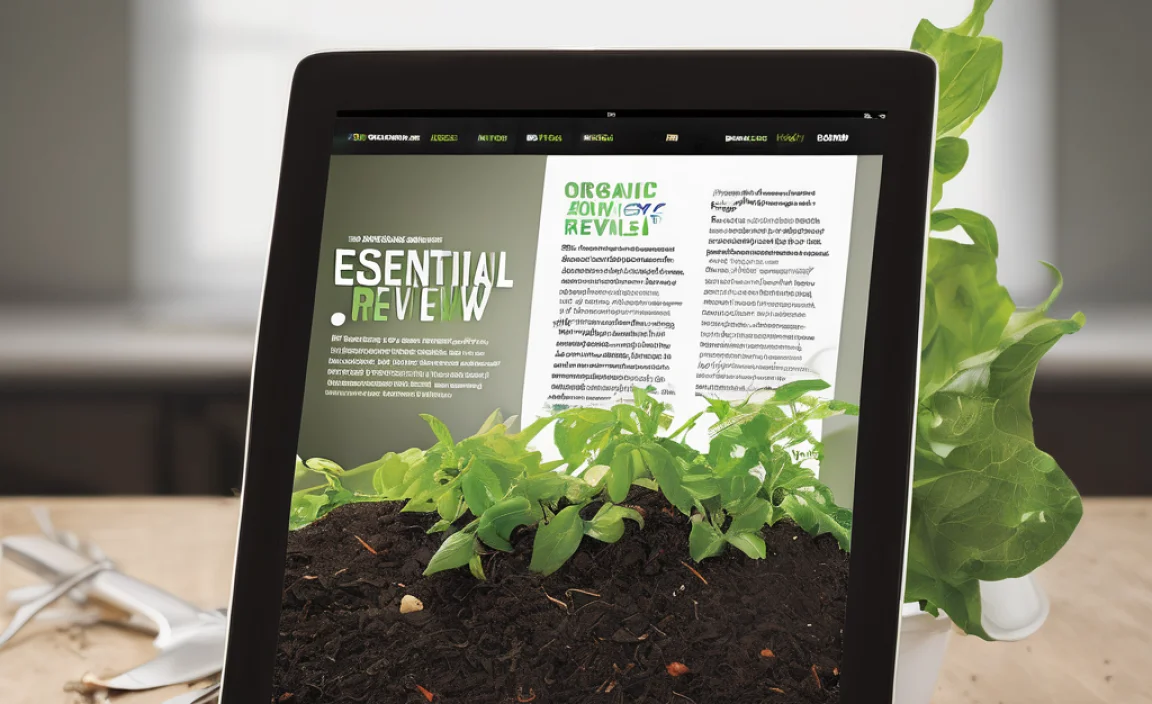What Exactly Are Pit Composting Bugs?
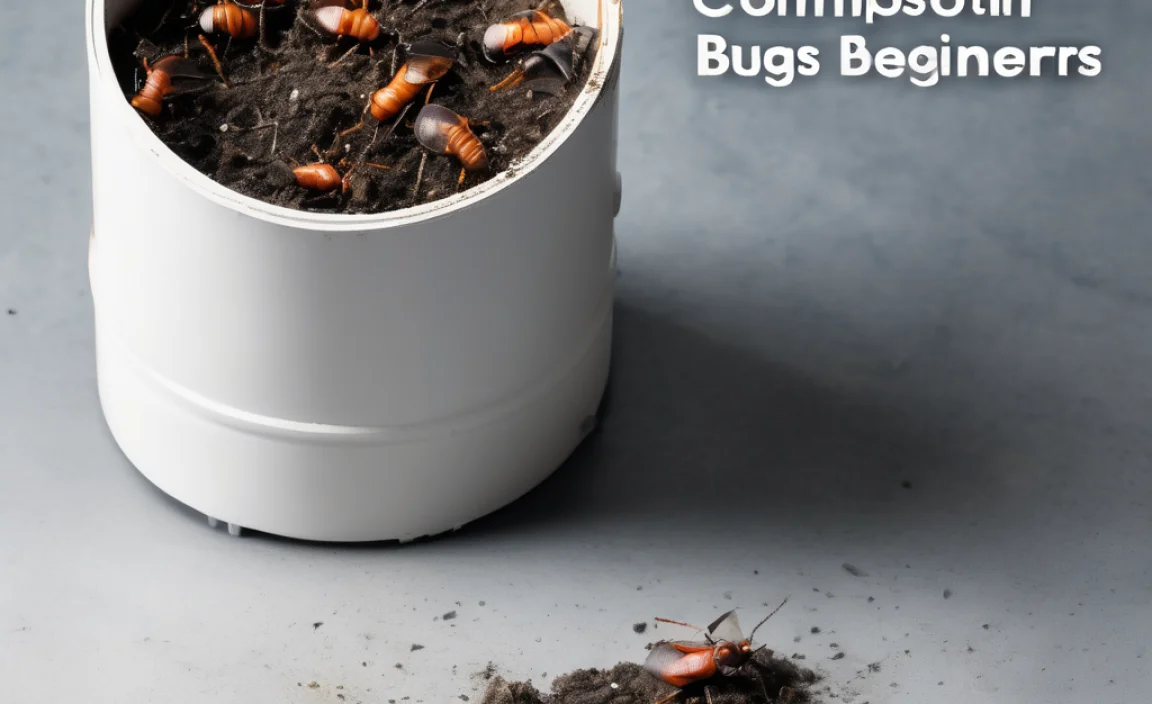
When we talk about “pit composting bugs,” we’re really talking about the diverse community of insects, worms, mites, and other tiny critters that live in and help decompose organic matter in a compost pit. It’s a whole ecosystem humming with activity, all working to turn your waste into treasure.
Think of your compost pit as a bustling city for these tiny decomposers. They eat, reproduce, and churn through your compostable materials, turning them into a nutrient-rich material called humus. This is fantastic stuff for your garden!
The Good Bugs: Your Composting Crew
Most of the bugs you’ll find are beneficial. They are essential for breaking down materials efficiently. Let’s meet some of the stars of the show:
- Red Wiggler Worms (Eisenia fetida): These are the superstars of vermicomposting (worm composting), but they also thrive in well-managed compost pits. They eat rapidly and produce nutrient-rich castings.
- Springtails (Collembola): These tiny, jumping bugs are often mistaken for fleas. They are excellent at breaking down tougher materials and help control mold.
- Mites: Not all mites are bad! Predatory mites help control populations of other, less desirable pests, while some mites help break down organic matter.
- Soldier Fly Larvae (Hermetia illucens): These are amazing decomposers, especially of food scraps. They eat a lot and can handle a wide range of materials. Their presence often means your compost is working well.
- Ground Beetles: These larger insects are predators and can help keep populations of slug eggs and other pests down.
- Ants: While a few ants are usually harmless and can help aerate the pile, a large infestation can indicate the compost is too dry or not being turned enough.
The “Not-So-Good” Bugs (And How to Manage Them)
Sometimes, certain bugs or an overpopulation of them can signal an imbalance in your compost pit. It’s not that they’re inherently “bad,” but their presence might mean something needs adjusting.
- Fruit Flies: A common nuisance, especially if you’re adding a lot of fruit scraps. They love exposed food waste.
- House Flies: Similar to fruit flies, they are attracted to decaying food.
- Ants (in large numbers): As mentioned, a huge ant colony can mean your compost is too dry or you’re not mixing greens and browns effectively.
- Centipedes and Millipedes: While they do eat decaying matter, large numbers can sometimes indicate a compost pile that is too wet or compacted.
The key with these “nuisance” bugs is to address the conditions that attract them. Usually, it’s about balancing moisture, aeration, and the mix of materials.
Why Are Bugs Important for Pit Composting?
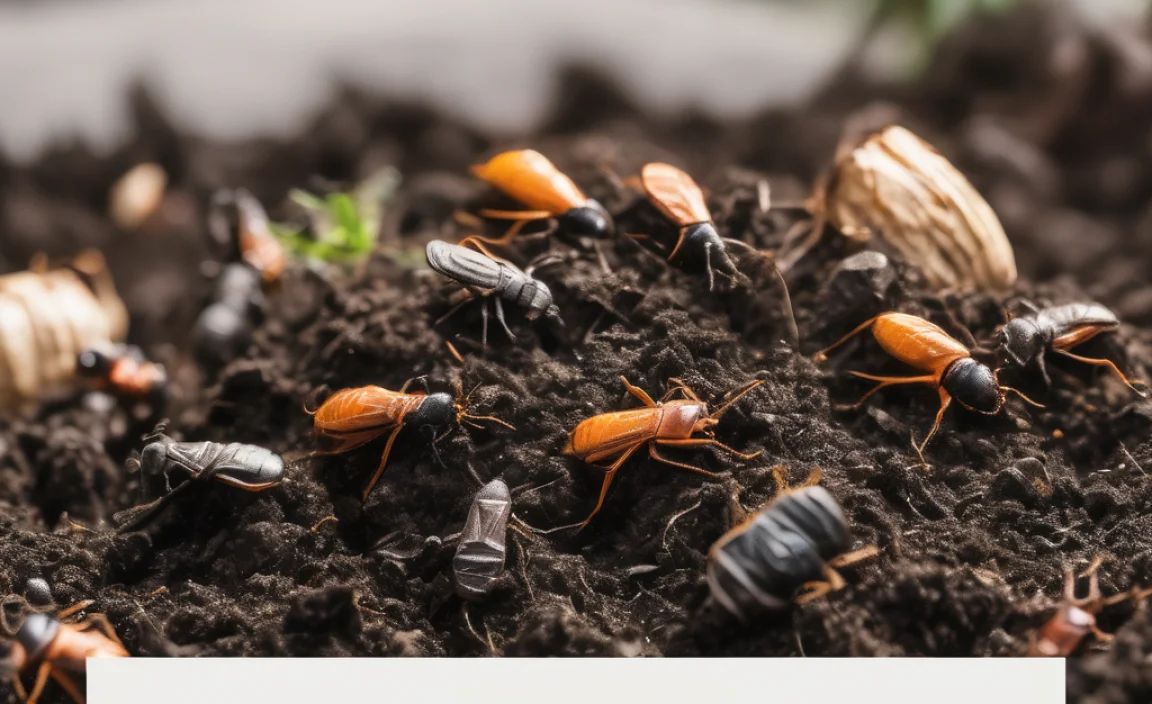
Bugs are the unsung heroes of composting. Without them, breaking down organic matter would take a very, very long time. Here’s why they’re so crucial:
- Decomposition: They physically break down larger pieces of organic matter into smaller ones, increasing the surface area for microbes to work on.
- Aeration: As they move through the compost, they create tunnels and air pockets, which are vital for the aerobic bacteria that thrive and produce compost efficiently.
- Nutrient Cycling: They digest organic materials and excrete waste, which introduces nutrients in a form that plants can use.
- Temperature Regulation: The activity of the microorganisms and bugs generates heat, which helps kill weed seeds and pathogens.
The more diverse the population of beneficial bugs, the more effectively your compost pile will work. It’s a self-sustaining system when managed correctly.
Setting Up Your Pit Compost System
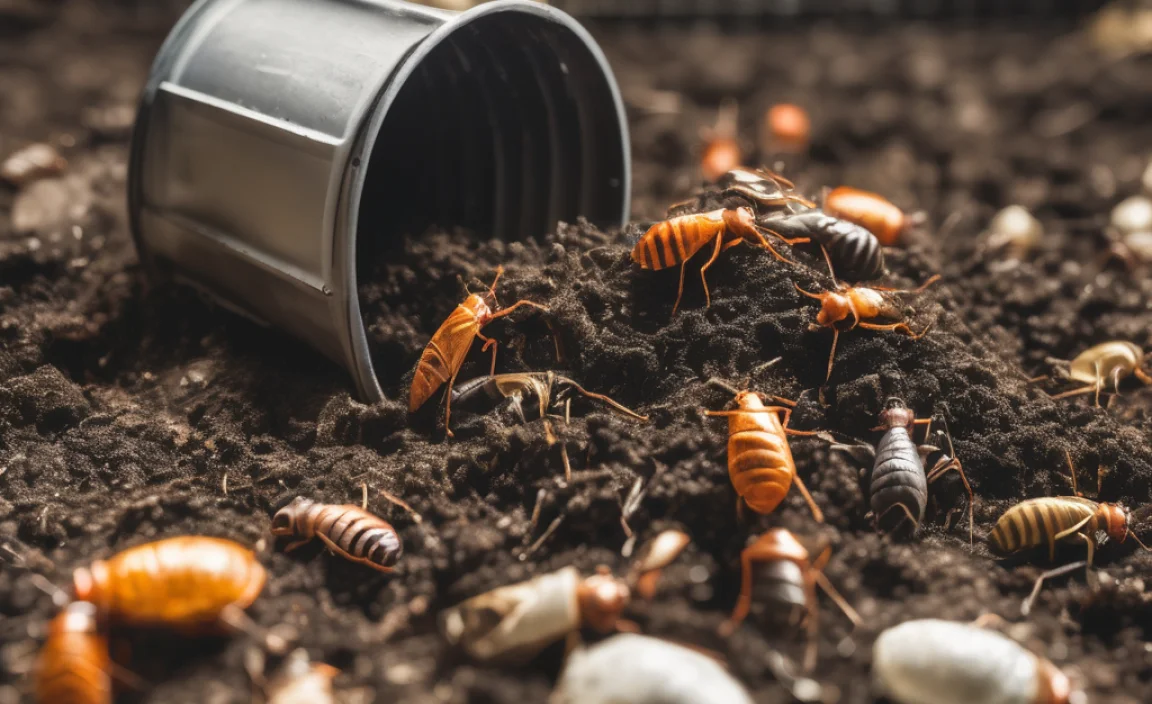
A pit compost system is one of the simplest ways to start composting. You essentially dig a hole in the ground and fill it with your compostable materials. It’s beginner-friendly because it requires minimal upfront investment in bins or structures.
Choosing the Right Location
Pick a spot in your yard that is:
- Accessible: You’ll need to add materials regularly and eventually harvest compost.
- Well-drained: You don’t want your compost pit to become a waterlogged swamp.
- Partially Shaded: Full sun can dry out the pile too quickly, while deep shade might keep it too wet.
- Away from Water Sources: Keep it a safe distance from wells or natural water bodies to prevent contamination.
Digging Your Compost Pit
This is the straightforward part. You can dig a pit of almost any size, but a good starting point is about 3 feet wide and 3 feet deep. The good news is that the ground itself acts as the “bin.”
One advantage of a pit system is that worms and other beneficial organisms can easily migrate into your pile from the surrounding soil, kicking off the composting process naturally.
What to Put In Your Pit Compost
The general rule of thumb for composting is a good balance of “greens” (nitrogen-rich materials) and “browns” (carbon-rich materials). Aim for roughly a 1:2 or 1:3 ratio of greens to browns by volume.
“Greens” (Nitrogen-Rich):
- Fruit and vegetable scraps
- Coffee grounds and tea bags
- Grass clippings (in thin layers)
- Plant trimmings (non-woody)
- Manure from herbivores (cow, horse, rabbit – avoid pet waste)
“Browns” (Carbon-Rich):
- Dry leaves
- Shredded cardboard and paper (non-glossy)
- Straw and hay
- Wood chips and sawdust (use sparingly)
- Pine needles
What NOT to compost:
- Meat, fish, and dairy products (attract pests and can create odors)
- Oily or greasy foods
- Diseased plants
- Weeds that have gone to seed
- Pet waste (dog or cat feces – can contain pathogens)
- Treated wood
- Coal ash
For more detailed information on compostable materials, the U.S. Environmental Protection Agency (EPA) offers excellent guidance.
Managing Your Pit Compost to Attract Good Bugs
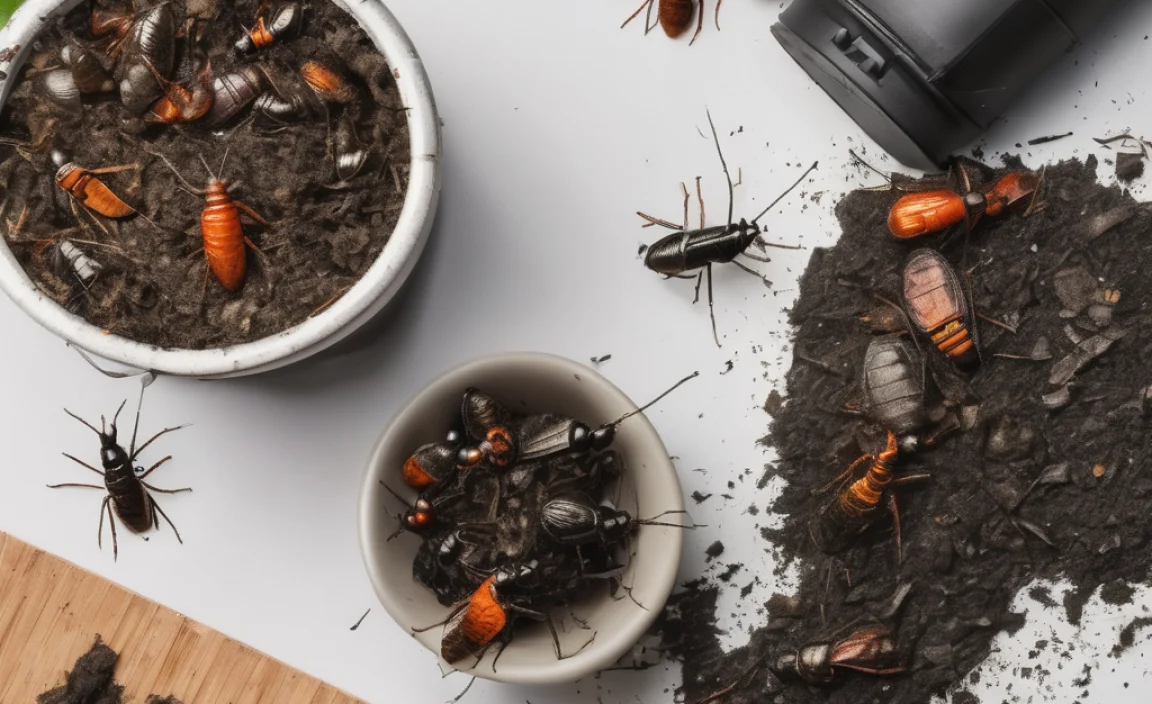
Attracting and keeping the right kind of bugs is all about creating a happy environment for them. This means balancing moisture, aeration, and the mix of materials.
Layering Your Compost
When you add materials to your pit, try to layer them. Start with a layer of brown materials (like leaves or shredded cardboard) at the bottom to help with drainage and aeration. Then, alternate layers of greens and browns. Burying fresh kitchen scraps under brown materials is a great way to deter fruit flies and other nuisance insects.
Moisture Management
Your compost pile should be as damp as a wrung-out sponge. Too dry, and the microorganisms and bugs won’t be able to work. Too wet, and it can become anaerobic (lacking oxygen), leading to foul odors and attracting unwanted pests. You can check moisture by squeezing a handful of compost – a few drops of water should come out.
- If too dry: Add water with a hose or watering can.
- If too wet: Add more brown materials (like shredded cardboard or dry leaves) to absorb excess moisture, and turn the pile to increase aeration.
Aeration is Key
Oxygen is crucial for the aerobic process that produces good compost and keeps odors down. Turning your compost pile periodically helps introduce air and mixes the materials.
You don’t need to turn a pit compost as often as a traditional bin, but giving it a fork or shovel turn every few weeks or months will speed up the process and help prevent issues.
Temperature Considerations
A healthy, active compost pile will heat up. This heat is generated by the decomposition process and helps kill weed seeds and pathogens. While you don’t need to actively manage temperature in a pit compost like in an industrial setting, a pile that heats up indicates good microbial activity, which in turn supports beneficial bug populations.
Understanding Common Pit Composting Bugs and Issues
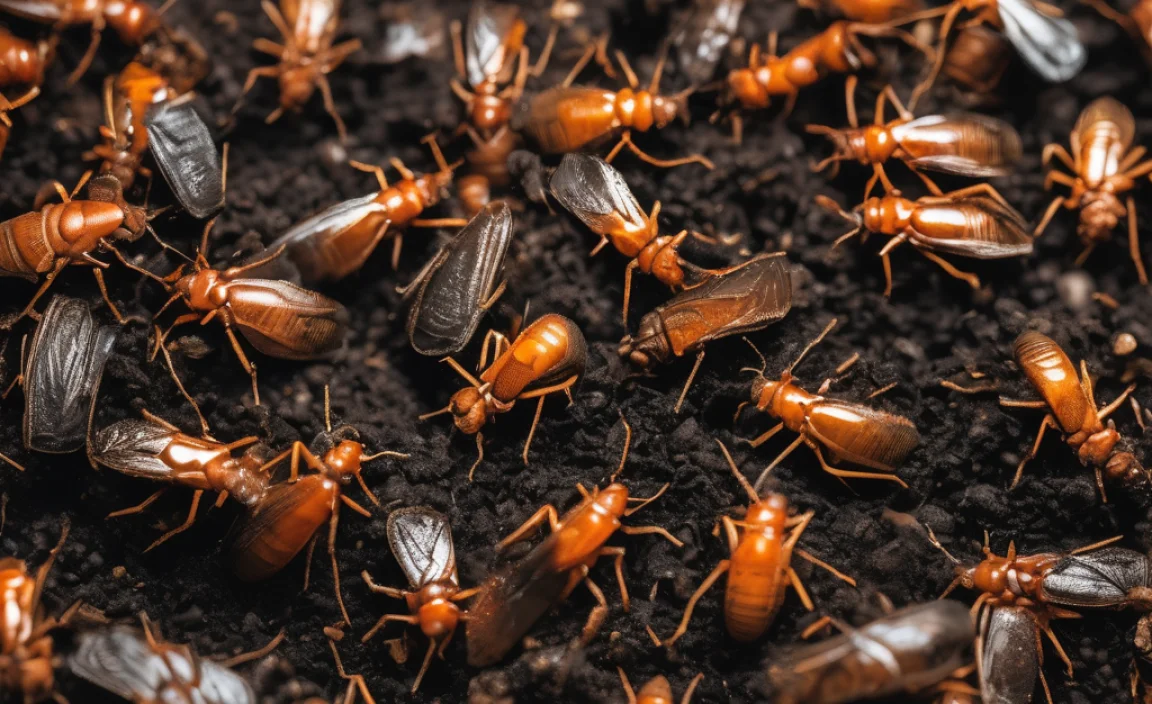
The Role of Earthworms
While you might not add earthworms specifically to a pit compost (though you can!), they will likely find their way in from the soil. They are excellent at processing materials and aerating the pile. Different types of worms (like red wigglers) are voracious eaters and will speed up the decomposition significantly.
What About Ants?
A few ants are usually not a problem. They can help break down materials and aerate. However, if you see your compost pit covered in ants, it’s often a sign that the pile is too dry. Ants are attracted to moisture, so if it’s dry, they will come seeking it. Water the pile thoroughly and mix in some green materials, which have higher moisture content.
Dealing With Fruit Flies and Other Gnats
These tiny fliers are usually attracted to exposed food scraps. The best way to manage them is to ensure that all food waste is buried at least a few inches deep within the compost layers, ideally under a topping of brown materials. Regularly turning the pile also helps disturb their habitats.
The Appearance of Soldier Fly Larvae
Black Soldier Fly Larvae (BSFL) are fantastic composters, especially for food waste. If you see them, consider it a good sign! They are efficient at reducing waste volume and are not typically attracted to living plants. They can thrive in both wet and dry conditions and are a great addition to a compost system.
Slugs and Snails
These slimy visitors can sometimes be found in compost piles, especially if the pile is too wet and hasn’t been turned in a while. While they do help with decomposition, a large population might indicate an issue with moisture. Turning the pile and adding brown materials can help.
Troubleshooting Common Problems
Even with the best intentions, compost piles can sometimes present challenges. Here’s a quick guide to common issues and how to fix them:
| Problem | Cause | Solution |
|---|---|---|
| Foul Odors (Ammonia or Rotten Egg Smell) | Too wet, lack of oxygen (anaerobic conditions) | Turn the pile to aerate. Add more brown, carbon-rich materials (leaves, shredded cardboard). Ensure the pit is draining well. |
| Pile is too Dry | Lack of moisture, too much sun exposure | Water the pile thoroughly. Add more green, nitrogen-rich materials. Cover with a tarp if in full sun. |
| Slow Decomposition | Too dry, too wet, not enough nitrogen, lack of aeration | Adjust moisture. Turn the pile. Add more green materials (kitchen scraps, grass clippings). Ensure a good mix of greens and browns. |
| Attracting Pests (Rodents, Flies) | Exposed food scraps, meat/dairy, pile too wet/stagnant | Bury food scraps deep in the pile. Avoid meat, dairy, and oily foods. Cover the pile with brown materials. Turn regularly. |
When is Compost Ready?
Compost from a pit system usually takes longer to mature than compost made in a faster, managed system. You’re looking for a dark, crumbly material that smells earthy and pleasant. You shouldn’t be able to identify the original materials.
Depending on the size of your pit, the materials you add, and how often you turn it, compost can take anywhere from 6 months to 2 years to be ready. You can start harvesting the bottom layers once they’re finished, while continuing to add new materials to the top. This continuous process is called a “cold” or “passive” compost system.
Conclusion: Embrace Your Buggy Compost!
As you can see, the “bugs” in your pit compost are not something to fear, but rather to welcome! They are the tiny engines driving the decomposition process, turning your kitchen scraps and garden waste into a valuable resource for your garden. By understanding the needs of these beneficial creatures – providing them with the right balance of moisture, air, and food – you can create a thriving compost system with minimal effort.
Don’t be afraid to get your hands a little dirty. Observe your compost pile, make slight adjustments as needed, and trust the natural process. Soon, you’ll have rich, dark compost ready to nourish your plants, all thanks to your industrious crew of composting bugs. Happy composting!
FAQ: Your Pit Composting Bug Questions Answered
Q1: I see a lot of ants in my compost pit. Is this bad?
A1: Usually, a few ants aren’t a problem and can even help aerate the pile. If you have a large ant infestation, it’s often a sign that your compost is too dry. Water it thoroughly and add some moist green materials.
Q2: What are those white, jumping bugs in my compost?
A2: Those are likely springtails! They are excellent decomposers, especially of tougher organic materials, and help control mold. They are a very beneficial bug to have in your compost.
Q3: Do I need to add worms to my pit compost?
A3: Not necessarily. Earthworms will naturally migrate into a pit compost from the surrounding soil. If you want to speed things up, you can add red wiggler worms, but it’s not a requirement for a basic pit system.
Q4: I’m seeing a lot of fruit flies. How can I get rid of them?
A4: Fruit flies love exposed kitchen scraps. The best way to prevent them is to always bury your food waste deep within the compost layers, covered by brown materials like leaves or shredded cardboard. Turning the pile also helps.
Q5: Can I compost pet waste in my pit?
A5: It’s generally not recommended to compost waste from dogs or cats in a home compost system, especially a pit compost. Their waste can contain pathogens that may not be killed by the composting process, posing a health risk. Stick to manure from herbivores.
Q6: How do I know when my compost is ready to use?
A6: Finished compost will be dark brown or black, crumbly, and smell earthy, like a forest floor. You won’t be able to recognize the original food scraps or yard waste. If it still smells sour or like rotting food, it needs more time.

I am passionate about home engineering. I specialize in designing, installing, and maintaining heating, ventilation, and air conditioning systems. My goal is to help people stay comfortable in their homes all year long.

